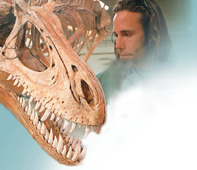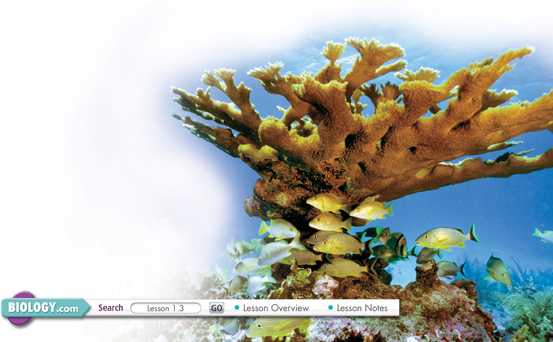
1.3 Studying Life
 What characteristics do all living things share?
What characteristics do all living things share? What are the central themes of biology?
What are the central themes of biology? How do different fields of biology differ in their approach to studying life?
How do different fields of biology differ in their approach to studying life? How is the metric system important in science?
How is the metric system important in science?
biology • DNA • stimulus • sexual reproduction • asexual reproduction • homeostasis • metabolism • biosphere
Concept Map As you read, draw a concept map showing the big ideas in biology.
THINK ABOUT IT Think about important and exciting news stories you've seen or heard. Bird flu spreads around the world, killing thousands of birds and threatening a human epidemic. Users of certain illegal drugs experience permanent damage to their brains and other parts of their nervous systems. Reports surface about efforts to clone human cells to grow new organs to replace those lost to disease or injury. These and many other stories involve biology—the science that employs scientific methodology to study living things. (The Greek word bios means “life,” and -logy means “study of.”)
Characteristics of Living Things
 What characteristics do all living things share?
What characteristics do all living things share?
Biology is the study of life. But what is life? What distinguishes living things from nonliving matter? Surprisingly, it isn't as simple as you might think to describe what makes something alive. No single characteristic is enough to describe a living thing. Also, some nonliving things share one or more traits with organisms. For example, a firefly and fire both give off light, and each moves in its own way. Mechanical toys, automobiles, and clouds (which are not alive) move around, while mushrooms and trees (which are alive) stay in one spot. To make matters more complicated, some things, such as viruses, exist at the border between organisms and nonliving things.
Despite these difficulties, we can list characteristics that most living things have in common.  Living things are made up of basic units called cells, are based on a universal genetic code, obtain and use materials and energy, grow and develop, reproduce, respond to their environment, maintain a stable internal environment, and change over time.
Living things are made up of basic units called cells, are based on a universal genetic code, obtain and use materials and energy, grow and develop, reproduce, respond to their environment, maintain a stable internal environment, and change over time.

FIGURE 1–12 Is It Alive? The fish are clearly alive, but what about the colorful structure above them? Is it alive? As a matter of fact, it is. The antlerlike structure is actually a marine animal called elkhorn coral. Corals show all the characteristics common to living things.
Table of Contents
- Formulas and Equations
- Applying Formulas and Equations
- Mean, Median, and Mode
- Estimation
- Using Measurements in Calculations
- Effects of Measurement Errors
- Accuracy
- Precision
- Comparing Accuracy and Precision
- Significant Figures
- Calculating With Significant Figures
- Scientific Notation
- Calculating With Scientific Notation
- Dimensional Analysis
- Applying Dimensional Analysis




